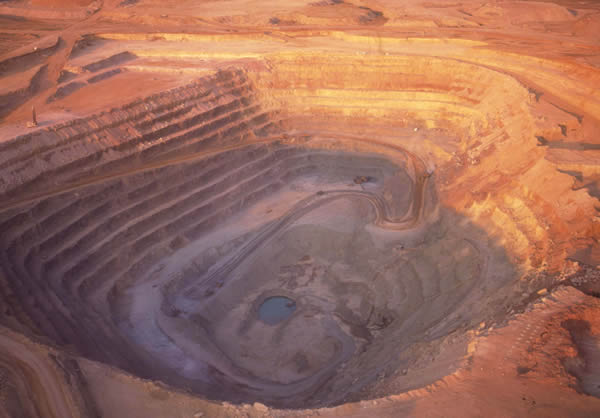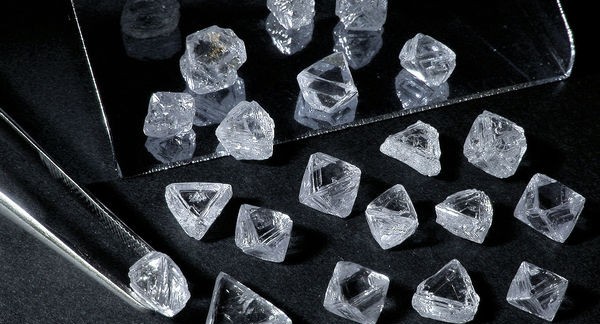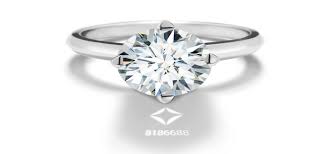Global diamond giant, De Beers said that last year’s demand for diamond jewellery, across the key consumer markets, was broadly stable on 2015.
Group head of media relations Lynette Gould told Rough & Polished’s Mathew Nyaungwa that the United States had again drove performance in 2016, supported by the economy posting solid growth in consumer spending and employment numbers.
She said after a really challenging year for the midstream in 2015, 2016 saw improved trading conditions, and a much better inventory situation.
Meanwhile, De Beers’ spokesperson said that the extent of global growth in 2017 will be dependent upon a number of macro-economic factors, including the strength of the dollar and economic performance in China and its impact worldwide.
She said India’s demonetisation policy had affected trade in smaller, lower value rough diamonds.
On synthentics, Gould said De Beers believed that diamonds and the lab grown gems are two different propositions.
She said their research had regularly showed that consumers do not see synthetic diamonds as potential substitutes for natural diamonds.
Below are the excerpts.
What was your assessment of the diamond industry in 2016 and what is your projection of the diamond industry this year?
It’s still too early for full results from the all-important Thanksgiving/Christmas sales period in the US, and the key selling season in China that continues into the New Year, but our current assessment is that demand for diamond jewellery for 2016, across the key consumer markets, was broadly stable on 2015.
From what we’ve seen so far the US again drove performance in 2016, supported by the economy posting solid growth in consumer spending and employment numbers.
In China, there have been some nascent signs of improving consumer demand for diamond jewellery – however, caution remains.
India saw a number of challenges during the year, with the month-long jeweller’s strike in March, and the recent demonetization policy, impacting the domestic market.
After a really challenging year for the midstream in 2015, 2016 saw improved trading conditions, and a much better inventory situation.
The actions we took to generate improved momentum towards the end of 2015 (a reduction in our production, increased flexibility for our Sightholders eg additional deferral options through 2015, rough prices reduced by 8% (on an index basis) over H1 2015, and continued investment in marketing activities for Q4) quickly paid dividends and the improved midstream trading conditions were sustained through the year.
All in all, 2016 was an important year of consolidation for the industry after the challenges of 2015, and will hopefully set the industry up well for the year ahead.
The extent of global growth in 2017 will be dependent upon a number of macro-economic factors, including the strength of the dollar and economic performance in China and its impact worldwide.
However, we are anticipating that the US will drive performance with positive growth.
Will India’s demonetisation policy have a strong bearing on the diamond industry going forward?
The trade in smaller, lower value rough diamonds is currently experiencing a slowdown as a result of the demonetisation policy.
 However, demand for De Beers’ rough diamonds in Q4 across, the rest of the product mix, continued to be healthy and, overall, sales remained in line with seasonal expectations.
However, demand for De Beers’ rough diamonds in Q4 across, the rest of the product mix, continued to be healthy and, overall, sales remained in line with seasonal expectations.
Over the medium and long term, the supply-demand fundamentals of the diamond industry are positive and continue to point to future growth.
India’s diamond consumer market has achieved almost uninterrupted growth over the last two decades, with demand for diamond jewellery expanding in 19 of the last 20 years, in rupee terms.
In the last decade alone, the market has nearly trebled in size to about INR220 billion. And, the future is just as promising.
India is home to a highly dynamic, growing consumer market; fuelled by a fast expanding economy, a widening consumer base and a culture where precious jewellery plays an intrinsic role in social occasions and family traditions.
In particular, India’s middle classes are growing rapidly, with the purchasing power of the highest income households expected to rise at the fastest pace.
So, in the long run, we believe there is as much untapped opportunity for the diamond industry in India as anywhere else in the world.
Debswana is said to be on track to produce its first diamonds from the expanded Jwaneng mine by next year. Can you provide an update on this project? Will the Cut 8 project still prolong the Jwaneng mine’s life by a further seven years and produce 100 million carats?
 Cut-8 will become the main source of ore for Jwaneng Mine in 2018 and extend the life of one of the world’s richest diamond mines, to at least 2035. We’re making good progress here and the new mine will provide access to an estimated 93 million carats of mainly high-quality diamonds from about 84 million tonnes of ore mined.
Cut-8 will become the main source of ore for Jwaneng Mine in 2018 and extend the life of one of the world’s richest diamond mines, to at least 2035. We’re making good progress here and the new mine will provide access to an estimated 93 million carats of mainly high-quality diamonds from about 84 million tonnes of ore mined.
Can you provide an update on the Venetia underground expansion project?
We’re making good progress on the $2 billion underground extension of the Venetia Mine in South Africa, with shaft sinking underway at the moment.
The new underground mine is the biggest single investment in the country’s diamond industry in decades and is scheduled to begin production in 2022, climbing to full production in 2025, when it will treat about 132 million tonnes of ore containing an estimated 94 million carats, and will extend the life of the mine to 2046.
Analysts were of the view that the final results for 2016 and early 2017 will depend largely on manufacturers’ ability to carefully balance inventory levels against year-end demand. Do you share the same sentiments?
So far, we have reported H1 2016 results so we can only provide commentary on that period.
Following a challenging year for the diamond industry’s midstream in 2015, there was a significant downward adjustment to our price index at the first Sight of 2016.
However, thanks to the actions taken to generate improved momentum towards the end of 2015, trading conditions improved in the first half of 2016 as inventory levels across the value chain began to normalise.
As such, our rough price index began to trend upwards again as we headed towards the half year.
However, this slight uptick in our rough prices after the first Sight of the year was not sufficient to return the index to the level it was at in Sight 10 of 2015, leading to prices for the half year as a whole reducing, even though trading conditions improved in the first six months of 2016.
While we can’t provide detailed commentary on rough price movements in H2 2016 until our FY2016 results are published on 21st February, we have reported healthy demand for De Beers’ rough diamonds in H2, in line with normal seasonal demand patterns.
De Beers said early last month that its rough diamond prices fell 5 percent in 2016 even as the diamond market showed signs of a vast improvement. What caused the decline, albeit marginal?
So far, we have publicly reported H1 2016 results so I can only provide commentary on that period.
[As I said before] following the challenging year for the midstream in 2015, there was a significant downward adjustment to our price index at the first Sight of 2016.

However, thanks to the actions taken to generate improved momentum towards the end of 2015, trading conditions improved in 2016 as inventory levels normalized.
Since then, we saw a slight upward adjustment to our rough diamond price index in the first half of the year.
However, the significant adjustment in the first Sight led to the price index for the half year as a whole being 6% lower than it was in the final Sight of 2015.
Synthetic diamonds emerged as a huge challenge to the diamond industry this year. What is De Beers doing to protect its market share and ethical trading?
Firstly, we believe diamonds and synthetics are two different propositions. Our research consistently shows that consumers do not see synthetic diamonds as potential substitutes for natural diamonds.
However, the challenge that we need to focus on is ensuring the reputation of the industry – and the integrity of the product we sell – is beyond question.
Challenges to product integrity, such as the risk of undisclosed synthetics infiltrating the pipeline, are things that we take very seriously.
The consumer response to buying a synthetic product when they believed it to be natural could generate a real confidence issue for the industry, so the right steps need to be taken at all stages of the pipeline – but particularly in the midstream – to address this.
De Beers has made major investments in synthetic detection technology over a number of decades. Our ability to produce different types of synthetic material means that we have the ideal test subjects for our constantly developing detection instruments. We invest significantly in research in the area of synthetic diamonds and we have a very strong development pipeline in place to address key risk areas.
We have also introduced an expanded Melee Testing Service at our International Institute of Diamond Grading & Research Centre in Surat to support the midstream further in identifying potential undisclosed synthetics in the pipeline and providing assurance to their own customers. The new service will be able to process 16 million stones a year and represents an important tool for the midstream in maintaining confidence.
We also put huge focus on disclosure and we enshrine our requirements through the De Beers Best Practice Principles. This ethical code of conduct requires all our Sightholders and Accredited Buyers to map out their entire diamond pipelines and identify the key risk areas for potential synthetic contamination; and then for them to implement strong mitigation plans to cover these risks.
 And of course, we also undertake a great degree of lobbying throughout the industry to ensure that all trade participants (not just our customers) are required to adhere to similarly strict standards of behavior, so as to support both trade and consumer confidence when purchasing diamonds.
And of course, we also undertake a great degree of lobbying throughout the industry to ensure that all trade participants (not just our customers) are required to adhere to similarly strict standards of behavior, so as to support both trade and consumer confidence when purchasing diamonds.
As consumers have become more sophisticated in their buying motivations, beyond the traditional drivers of status and prestige to more discerning factors, they have a growing interest in the details of their purchase – where the product was sourced, how it was made etc. In response to this, in 2008, De Beers launched its Forevermark diamond brand.
Every Forevermark diamond undergoes a journey of rigorous selection.
Our unique inscription is an assurance that every Forevermark diamond meets the exceptional standards of beauty, rarity and is responsibly sourced. Forevermark has undergone an exciting expansion of its retailer network and is now available in some 1,874 outlets in 38 countries around the world.

